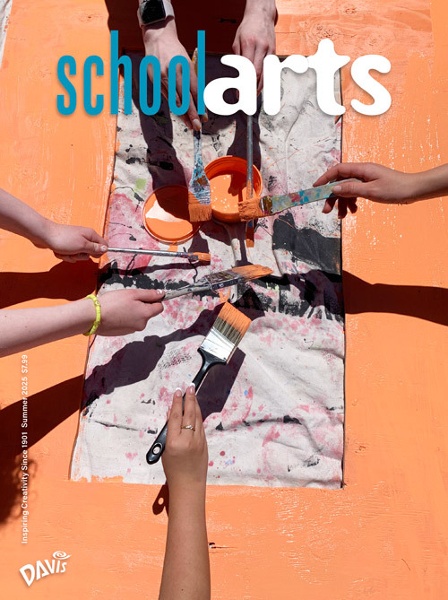Happy New Year: Japanese Surimono
Since I’m feeling lazy this week, I’m showing you Japanese New Year cards (surimono) again. I think they’re lovely, and who wouldn’t want to receive one of these color woodcut ...
Read MoreSince I’m feeling lazy this week, I’m showing you Japanese New Year cards (surimono) again. I think they’re lovely, and who wouldn’t want to receive one of these color woodcut ...
Read MoreI always admit I’m never too old to learn. This week I learned about National/International Monkey Day, which fell on the 14th of December. The commemorative day has only been around since 2000, ...
Read MoreIt probably doesn’t occur to most people to view a fish as a symbol of heroic qualities, unless maybe it’s a whale or a shark. In Japan, the carp (koi in Japanese) is a symbol of cour ...
Read MoreYou may remember that I introduced you to the fiber art of Korean artist Jeung Hwa-Park, whose work is fabulous, back in 2009. Now I’ve discovered this wonderful Japanese artist who bowls me ove ...
Read MoreDid you known that the Japanese did not have a written language up until the 400s CE? I find cursive Japanese so incredibly beautiful. The story behind its development is very interesting, and I bet y ...
Read MoreI’m pretty sure there’s generally a misconception about the ukiyo-e phenomenon in Japanese art. It is certainly one I had until I recently came across hundreds of gorgeous woodblock prints ...
Read MoreLately, I can’t seem to get away from seeing “abstraction” in all sorts of places. I came across this wonderful Japanese bowl from the mid-1700s to mid-1800s, during the Edo period ( ...
Read MoreIn our art history survey, we are now at the end with the 1900s. The big “revelation” in Western art starting very late in the 1800s and flowering in the early 1900s was abstraction. Abstr ...
Read MoreArt in the 1800s brought us the terms Neoclassicism, Romanticism, and Realism, covered in my New Slant on Art History. The second half of the century saw a major shift in how artists used art to portr ...
Read MoreSo far we have taken a look at Classicism and Romanticism around the world in the 1800s. Now let’s look at “realism,” which—like every other style—has been a trend somewh ...
Read MoreLast week I discussed the stylistic designation “classicism” in both Western and non-Western art produced in the 1800s. For today’s New Slant on Art History, I continue to look at th ...
Read MoreAs we approach the 1800s in our Art History Survey, just so we do not forget (as if) that art was being produced in other parts of the world besides the West, let’s look elsewhere at art produce ...
Read MoreI think an alternate term for art of the 1600s is needed other than “Baroque.” Baroque is the established stylistic term for the period roughly 1600–1750 in Western art. The term com ...
Read MoreI know I showed a Japanese artist’s work last week, but I got so excited when I came across this woodcut print that I just had to share it with you. It’s a perfect example of saturation&nb ...
Read MoreI am eternally grateful for the ability to be “wowed” on a continual basis when I see works of art/artists I’ve never seen before! This may just be the art historian nerd in me, but ...
Read MoreStop me if you’ve heard this before, but I’m absolutely bonkers about ceramic art, and particularly Japanese and Chinese. This piece especially garnered my attention because it combines re ...
Read MoreWant to know what’s new from Davis? Subscribe to our mailing list for periodic updates on new products, contests, free stuff, and great content.
We use cookies to improve our site and your experience. By continuing to browse our site, you accept our cookie policy.
Find out more.

Our new issue is out, and it's all about INNOVATION. Art teachers share new and exciting art-making experiences in and outside the art room.
Read More